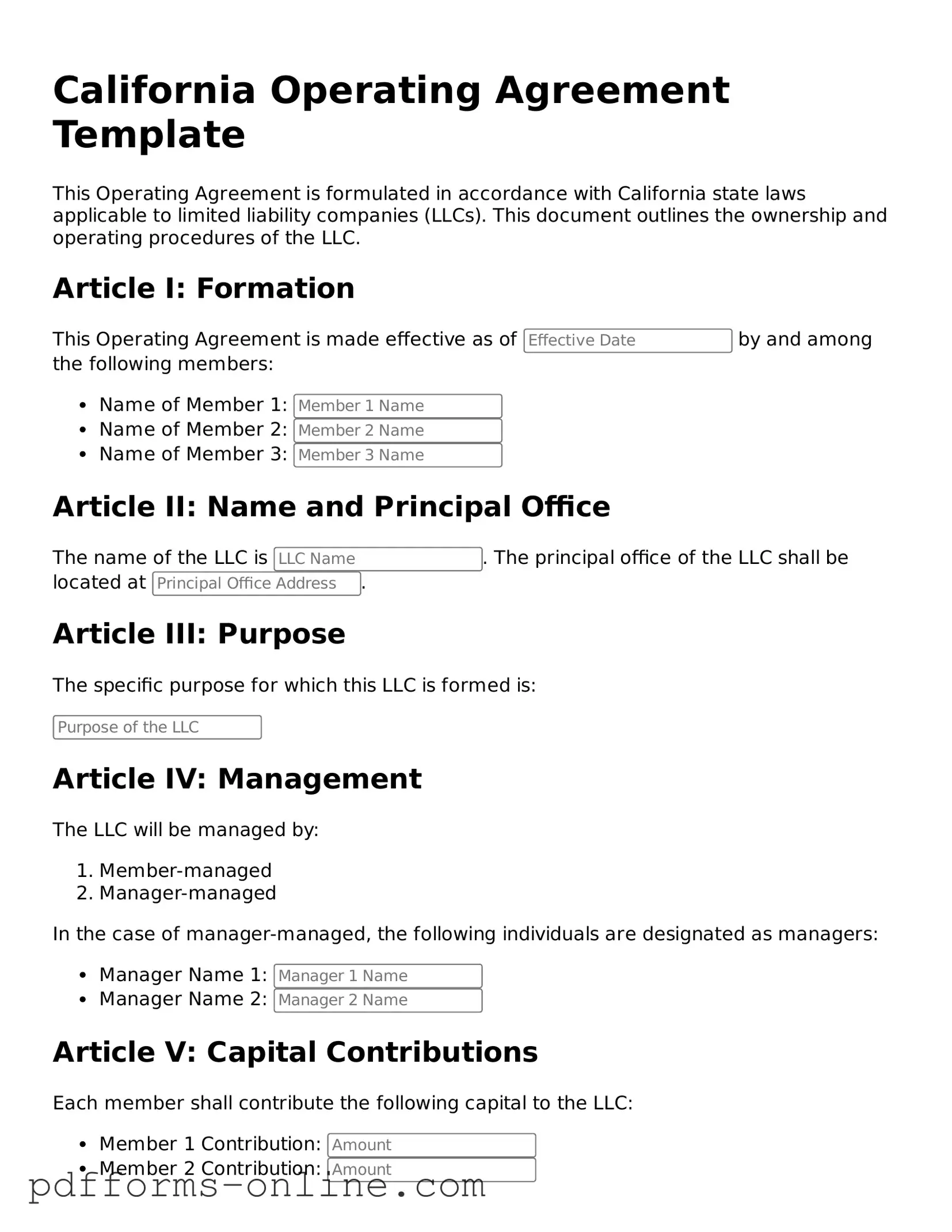The California Partnership Agreement is similar to the Operating Agreement in that both documents outline the structure and rules governing a business entity. While the Operating Agreement is specific to limited liability companies (LLCs), the Partnership Agreement serves partnerships. Both agreements define the roles of members or partners, their contributions, profit distribution, and procedures for resolving disputes. This ensures that all parties understand their responsibilities and rights within the business relationship.
The Bylaws of a corporation share similarities with the Operating Agreement, as both documents provide a framework for internal governance. Bylaws detail the management structure, including the roles of directors and officers, and outline procedures for meetings and decision-making. Like an Operating Agreement, Bylaws help ensure that all members or shareholders are on the same page regarding the operation of the business.
A Shareholder Agreement is another document akin to the Operating Agreement. This agreement is used in corporations and sets forth the rights and obligations of shareholders. It covers issues such as share transfers, voting rights, and how to handle disputes. Both documents aim to protect the interests of the parties involved and provide clarity on how the business will operate.
The LLC Membership Agreement is closely related to the Operating Agreement, as it serves a similar purpose for LLCs. This document outlines the rights and responsibilities of each member, including their ownership percentages, voting rights, and profit-sharing arrangements. Both agreements help establish a clear understanding of how the LLC will function and how decisions will be made.
The Joint Venture Agreement is another comparable document. It governs the relationship between two or more parties who come together for a specific project or business purpose. Like the Operating Agreement, it outlines the contributions of each party, profit-sharing, and the management structure. This helps ensure that all parties are aligned and understand their roles in the joint venture.
The Operating Agreement can also be compared to a Non-Disclosure Agreement (NDA) in terms of protecting business interests. While an NDA focuses on confidentiality, an Operating Agreement protects the operational aspects of a business. Both documents help safeguard sensitive information and ensure that all parties are aware of their obligations, thus fostering trust and cooperation.
Obtaining a General Power of Attorney form template can streamline the process of assigning someone to make important decisions on your behalf. This form is crucial for individuals who want to ensure their wishes are clearly communicated and legally recognized.
The Employment Agreement is another document that serves a specific purpose in the business context. While the Operating Agreement governs the relationship between members of an LLC, the Employment Agreement outlines the terms of employment for individuals working within the company. It details job responsibilities, compensation, and termination procedures, ensuring clarity in the employer-employee relationship.
A Franchise Agreement is similar in that it establishes the terms between a franchisor and a franchisee. This document outlines the rights and responsibilities of both parties, including fees, operational guidelines, and support provided by the franchisor. Like the Operating Agreement, it aims to create a clear understanding of the business relationship and expectations.
The Loan Agreement is another relevant document, particularly when financing is involved in a business venture. It outlines the terms of the loan, including repayment schedules, interest rates, and collateral. While the Operating Agreement focuses on the internal workings of a business, both documents are essential for defining financial relationships and obligations.
Finally, the Purchase Agreement is similar in that it outlines the terms of a transaction involving the sale of a business or its assets. This document specifies the purchase price, payment terms, and conditions of the sale. While the Operating Agreement governs the ongoing operations of a business, both documents are crucial for establishing clear terms and protecting the interests of all parties involved.
